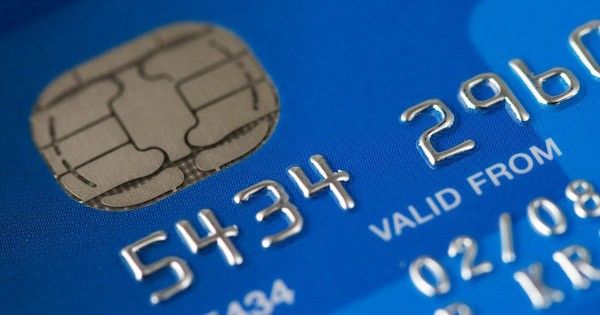Stay connected
Subscribe to our Inside WEX blog and follow us on social media for the insider view on everything WEX, from payments innovation to what it means to be a WEXer.
"*" indicates required fields

Counting, writing, tapping, dipping, swiping, scanning…of all the actions today’s consumers can take at the register, making a touch-free payment may be the most convenient. Thanks to the embedded EMV (Europay, MasterCard, Visa) chip and antenna in their payment card or wearable—or the NFC (near field communication) technology in their smartphone—when there’s no physical connection required between their payment device and the physical point of service terminal, check-out is quick, easy, and secure.
While some merchants’ EMV readers are of the “chip and dip” variety, meaning a customer inserts their card into a small slot in the payments terminal, others support truly contactless payments, enabling a customer to wave their card over a reader at a point of sale terminal, similar to the way they make a contactless payment with their smartphone. (Here’s a more technical explanation and as well as contactless communication protocol specifications for EMV transactions.)
In any case, contactless payments are becoming ubiquitously convenient. Customers don’t have to fumble with cash, and with small transactions, they usually don’t have to sign a receipt. For merchants, contactless payments require minimal staff intervention and tend to have lower costs per transaction, especially when compared with cash payments. They also provide a higher level of customer service, meeting shoppers’ changing preferences and even offering a point of differentiation from their competitors who don’t accept these new payment methods.
Whether it’s dipped or scanned, contactless payment devices that rely on smart chip technology benefit from multiple layers of security. Unlike a traditional magnetic stripe card upon which payment information is clearly printed, a smart chip manages, stores, and provides access to data on the device in which it’s embedded (e.g. card, key fob, smart watch). This makes it difficult for a fraudster to get information from the card itself. And to ensure security when using a mobile device, customers might have to verify themselves in order to activate their payment app and/or authenticate their payment with a fingerprint or passcode.
According to the Smart Payment Association, 1.5 billion smart payment cards where shipped globally last year, with 40% featuring contactless ‘tap and go’ technology. That’s a 35% year over year growth. The news release quotes Smart Payment Association President, Sylvie Gibert: “In 2014 we saw banks and retailers respond to consumer demands for faster and more convenient and more secure ways to pay as contactless shipments grew to their highest levels. Crucially, the continued and growing adoption of EMV-standard technology in the United States not only adds a greater security dimension, but offers contactless possibilities – both on the card and through embedded secure elements within NFC-enabled mobile devices.”
The adoption of EMV-based payments in the U.S. is about to increase—fast. On October 1, 2015, a “chip card” liability shift will apply to all U.S. merchants, meaning that if an EMV chip-capable credit or debit card (as opposed to a magnetic-stripe-only card) is presented at a terminal that cannot process it, the merchant becomes responsible for any transactions found to be fraudulent. (See U.S. Retailers One Month Away from EMV Liability Shift for more details.)
As for contactless mobile payments, Deloitte predicts by the end of 2015, 5% of the base of 600-650 million NFC equipped phones will be used at least once a month to make contactless in-store payments at retail outlets. They also expect that 2015 will be the year that the technology will reach widespread adoption among financial institutions, merchants, customers, and technology vendors and carriers—an important convergence necessary for mainstream growth. (Read Deloitte’s Contactless Mobile Payments (Finally) Gain Momentum report for additional insights.)
Check back to this blog for ongoing updates. Or, explore these resources to learn more about contactless payment technologies today:
The UK Cards Association
EMV vs. NFC — What’s the Difference?
Subscribe to our Inside WEX blog and follow us on social media for the insider view on everything WEX, from payments innovation to what it means to be a WEXer.
"*" indicates required fields